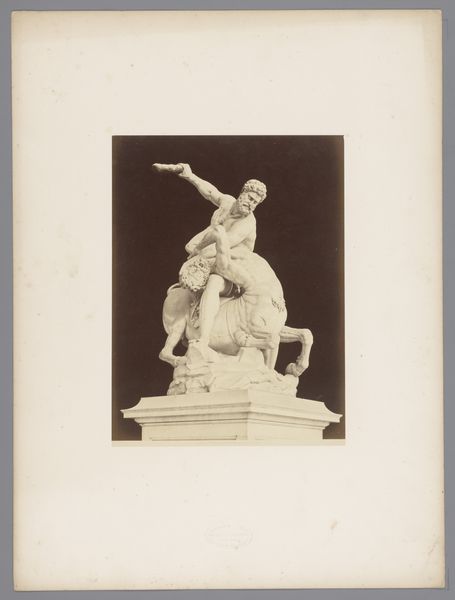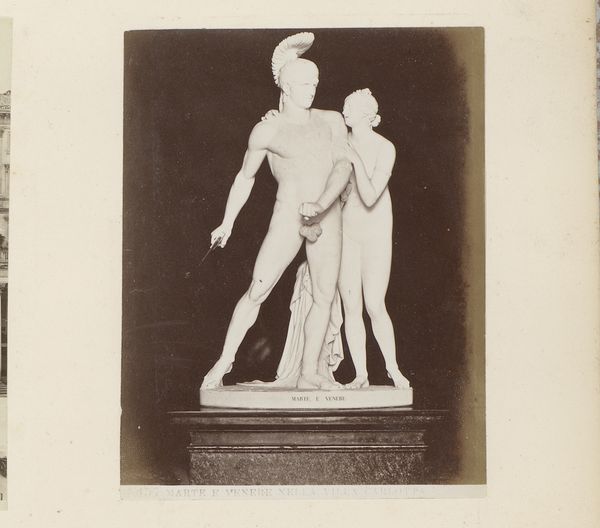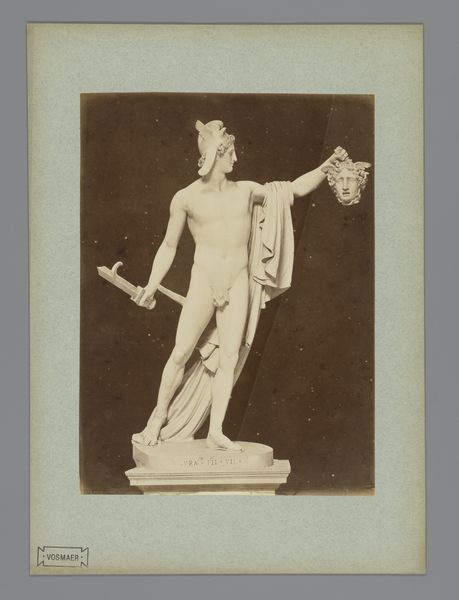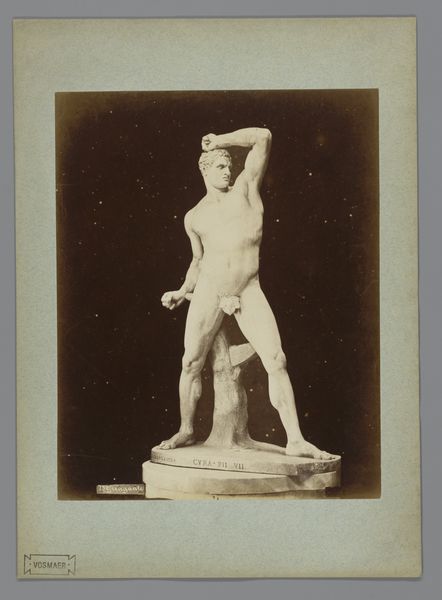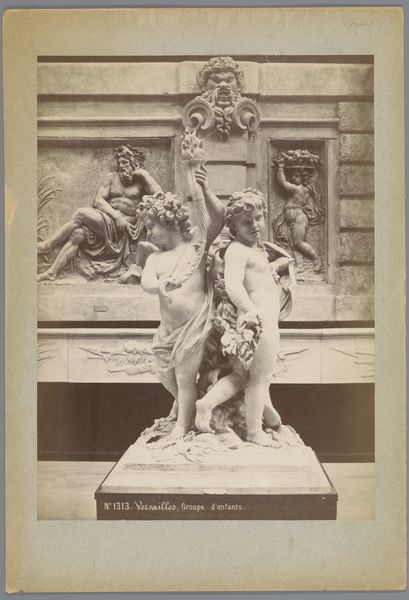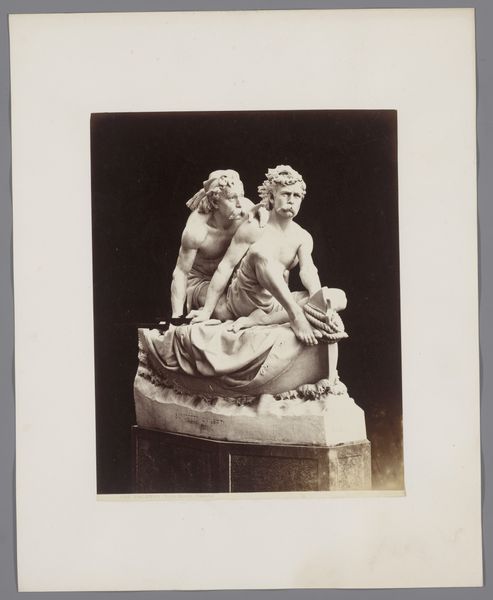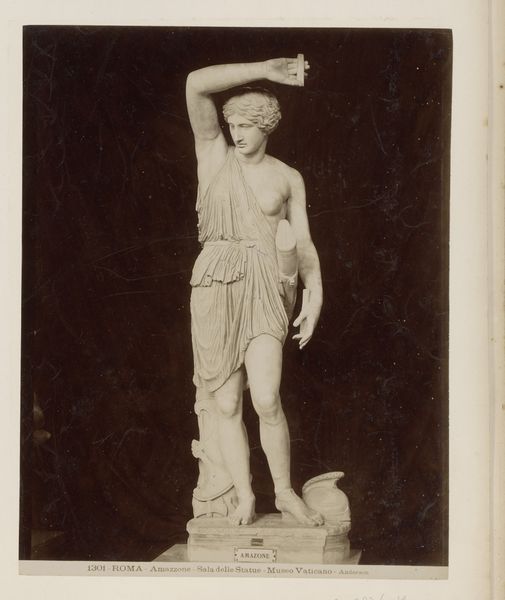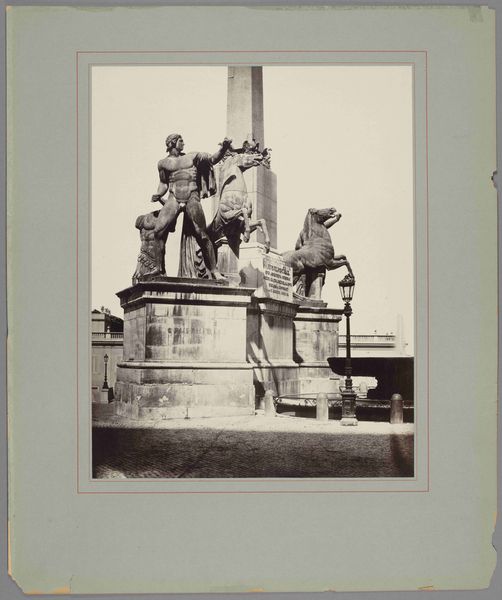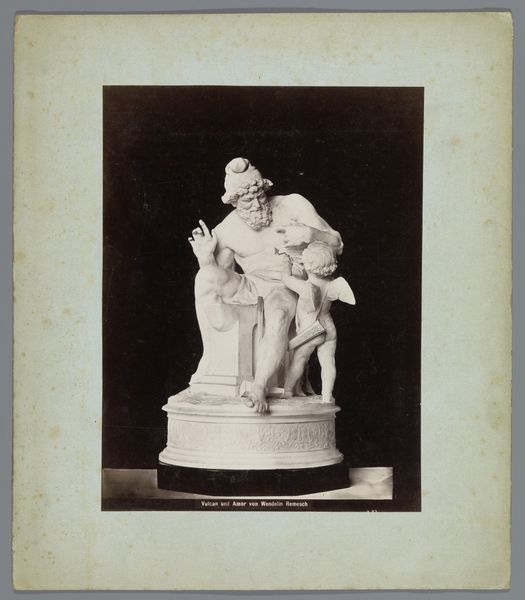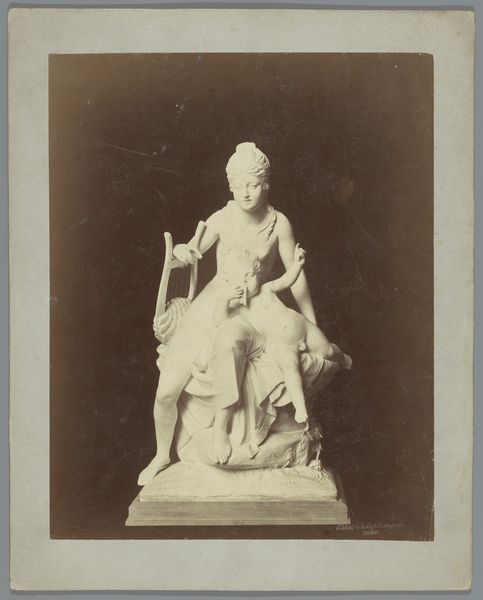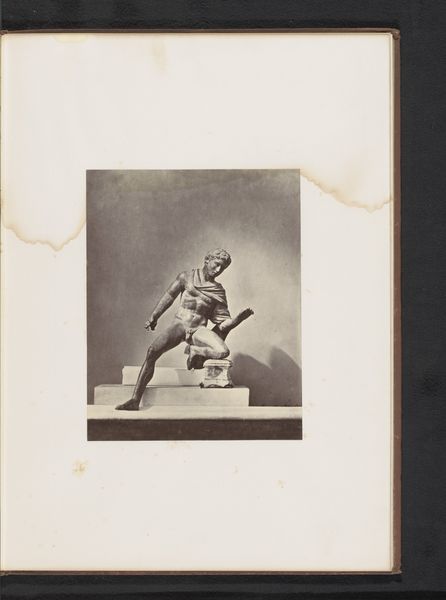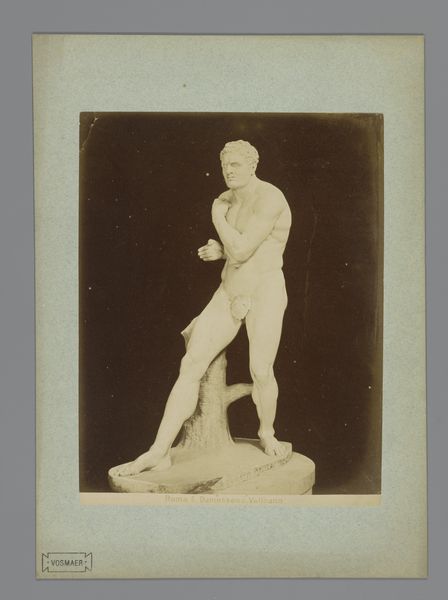
Florence_ Ajax Carrying the Body of Achilles, Sculptural Group in the Loggia dei Lanzi c. 1860 - 1870
0:00
0:00
albumen-print, paper, photography, sculpture, albumen-print
#
albumen-print
#
portrait
#
16_19th-century
#
pale palette
#
landscape
#
figuration
#
paper
#
photography
#
ancient-mediterranean
#
sculpture
#
history-painting
#
italian-renaissance
#
italy
#
albumen-print
#
realism
Copyright: Public Domain
Editor: Here we have an albumen print from around 1860-1870 by Fratelli Alinari depicting a sculptural group in the Loggia dei Lanzi called *Ajax Carrying the Body of Achilles*. It's quite striking, really— the way Ajax is carrying Achilles. What do you see in this piece? Curator: I see more than just a historical depiction. I see a complex exploration of heroism and its cost, filtered through a 19th-century lens grappling with classical ideals. Consider the timing. Why revisit this particular scene from the Trojan War during a period of intense national identity formation in Italy? Editor: Perhaps as a symbol of strength and resilience? Curator: Yes, but I'd argue it's also a commentary on the burdens of leadership and the glorification of war. Achilles, the celebrated hero, is now just dead weight. Ajax is burdened physically, and arguably, emotionally as well. Do you notice anything about the pose itself? Editor: The pose, it almost feels like Ajax is struggling, his expression is hidden. Is that intentional? Curator: Absolutely. By obscuring Ajax's face, Alinari's photograph invites us to consider not just his individual grief, but also the collective mourning and disillusionment that follows conflict. How might contemporary viewers interpret the vulnerability and potential trauma here? Editor: That’s a powerful way of looking at it. It reframes the classical hero narrative with modern sensibilities about war. Curator: Precisely. This photograph invites us to question what it truly means to be a hero and what the afterlives of such figures look like, forcing us to confront uncomfortable truths about power, loss, and memory. Editor: Thank you, it changes my perception of the image.
Comments
stadelmuseum about 2 years ago
⋮
Along with Venice, Rome, and Naples, Florence also made a name for itself as an important centre for photographyin Italy. It was there that Leopoldo Alinari, who had trained as an engraver, set up his own business in 1852. Two years later his brothers Romualdo and Giuseppe founded a photo studio. In addition to portraits, the Alinari offered views of the city’s famous monuments which they sold primarily to tourists. In 1859, they came to international fame with reproductions of drawings by Raphael in photographs of “high artistic value”, as the Photographisches Journal reported. From that time forward, photographic reproductions of artworks, for example from the Uffizi, were a permanent feature of the family company’s product range. Still in existence today, the Alinari Archive is a unique document of Italian art and architecture.
Join the conversation
Join millions of artists and users on Artera today and experience the ultimate creative platform.
